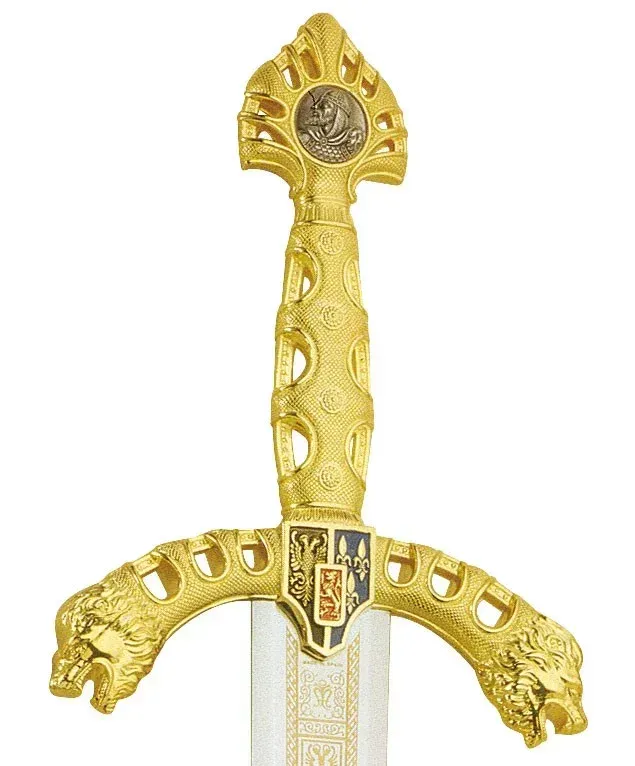Whose was the Durandal Sword?
The Durandal Sword, also known as Durandarte, is one of the most fascinating artifacts in medieval history. Associated with the legendary paladin Roland, nephew of Charlemagne, this sword has been the protagonist of countless legends and epic tales. Its story combines mythology, religion, and historical facts, captivating generations of readers and researchers alike.
Legendary Origins of the Durandal Sword
According to literary accounts and historical traditions, the Durandal Sword was given to Roland by Charlemagne himself as a symbol of his knighthood at the early age of 17. This gift not only highlighted Roland's merits but also imbued the sword with an almost sacred character due to the relic objects it contained:
- A tooth of Saint Peter, one of Jesus' apostles.
- Hair and blood of Saint Basil, a prominent saint of the Christian Church.
- A fragment of the Virgin Mary's mantle, symbolizing divine protection.
Durandal was not merely a weapon but a symbol of Christian faith and Charlemagne's mission to expand his empire and religion in medieval Europe.

The Heroic End of Roland and the Sword's Fate
The legend of Durandal is closely tied to the heroic death of Roland in the historic Battle of Roncevaux Pass, which took place on August 15, 788. During this battle, Roland used the sword until the final moment to defend his army from an ambush led by Basque tribes. However, the aftermath of the battle left multiple versions of what happened to the sword after his death:
- One of the most popular legends suggests that Roland, to prevent Durandal from falling into enemy hands, threw it into a lake, specifically Lake Carucedo. It is said that the sword remains submerged there, hidden from human sight.
- Another version of the story claims that Bernardo del Carpio, a celebrated Leonese knight, defeated Roland and took possession of the sword. Later, he supposedly buried it in Peña Longa, from where it was retrieved by Charles I.

Durandal and the Rocamadour Sanctuary
No less intriguing is the legend that places Durandal embedded in the rock of the Rocamadour Sanctuary in France. According to this version, Roland, overwhelmed by his enemies and near death, drove the sword into a cliff so that it could never be used by opponents. Although this narrative was possibly a propaganda strategy promoted by the sanctuary’s monks, the embedded sword has become a prophetic symbol that continues to attract pilgrims and curious visitors.
Durandal in Literature and Popular Culture
The impact of the Durandal Sword transcends history and oral tales. This mythical artifact has been immortalized in classic works such as "The Song of Roland" and "The Lay of Roncevaux," stories that have helped forge the legend of Roland as one of the most heroic knights of medieval tradition. In these accounts, Durandal appears not only as a formidable sword but as a symbol of loyalty, faith, and sacrifice.
Moreover, Durandal inspired later artistic, literary, and cultural creations, solidifying its place as an archetypal relic in medieval imagination.
An Artifact Lost in Time
To this day, the final destiny of the Durandal Sword remains a mystery. Is it truly submerged in a lake, hidden in a cave, or does it simply exist as a literary tale? The uncertainties surrounding the location of this sword have not diminished the fascination it evokes, remaining a recurring subject of study for historians, archaeologists, and novelists alike.
| Theory | Description | Associated Location |
| Lake Carucedo | Roland threw the sword into the water to prevent it from falling into enemy hands. | Lake Carucedo, Spain |
| Peña Longa | Bernardo del Carpio buried it after defeating Roland. | Peña Longa, Spain |
| Rocamadour | Embedded in a rock by Roland in his final moments. | Rocamadour Sanctuary, France |
















